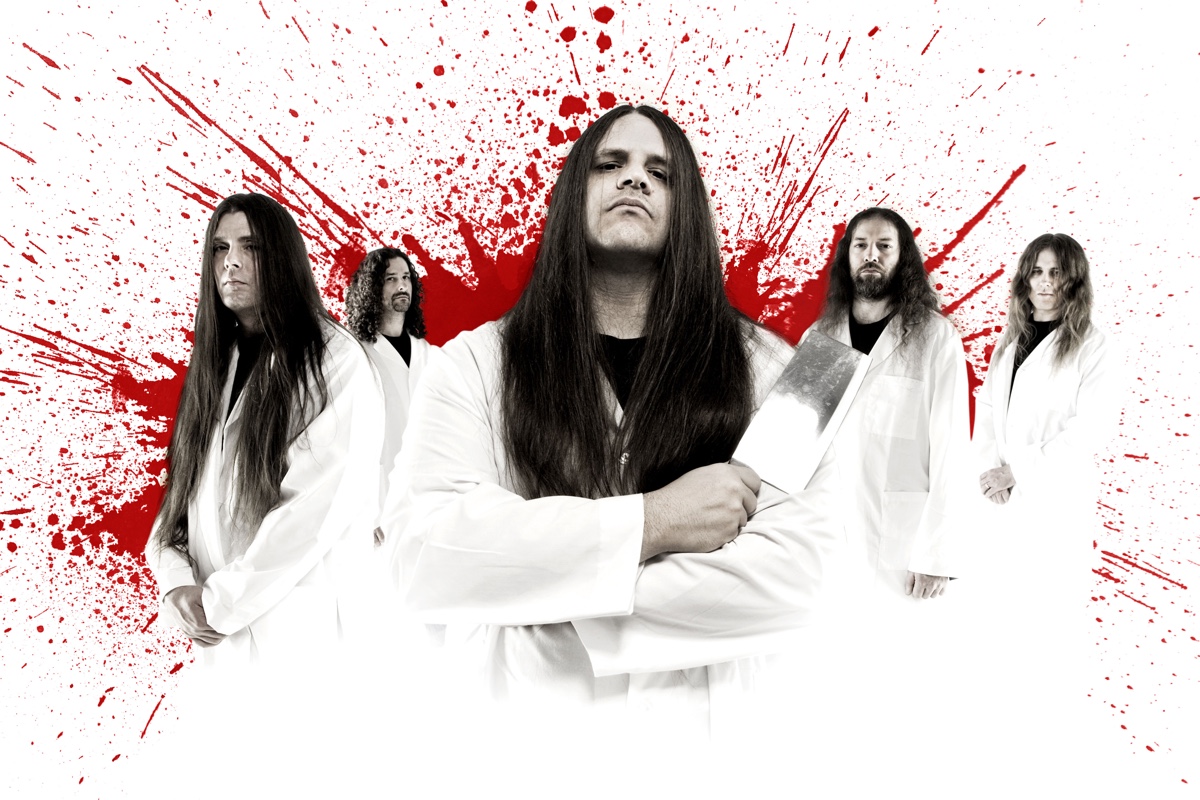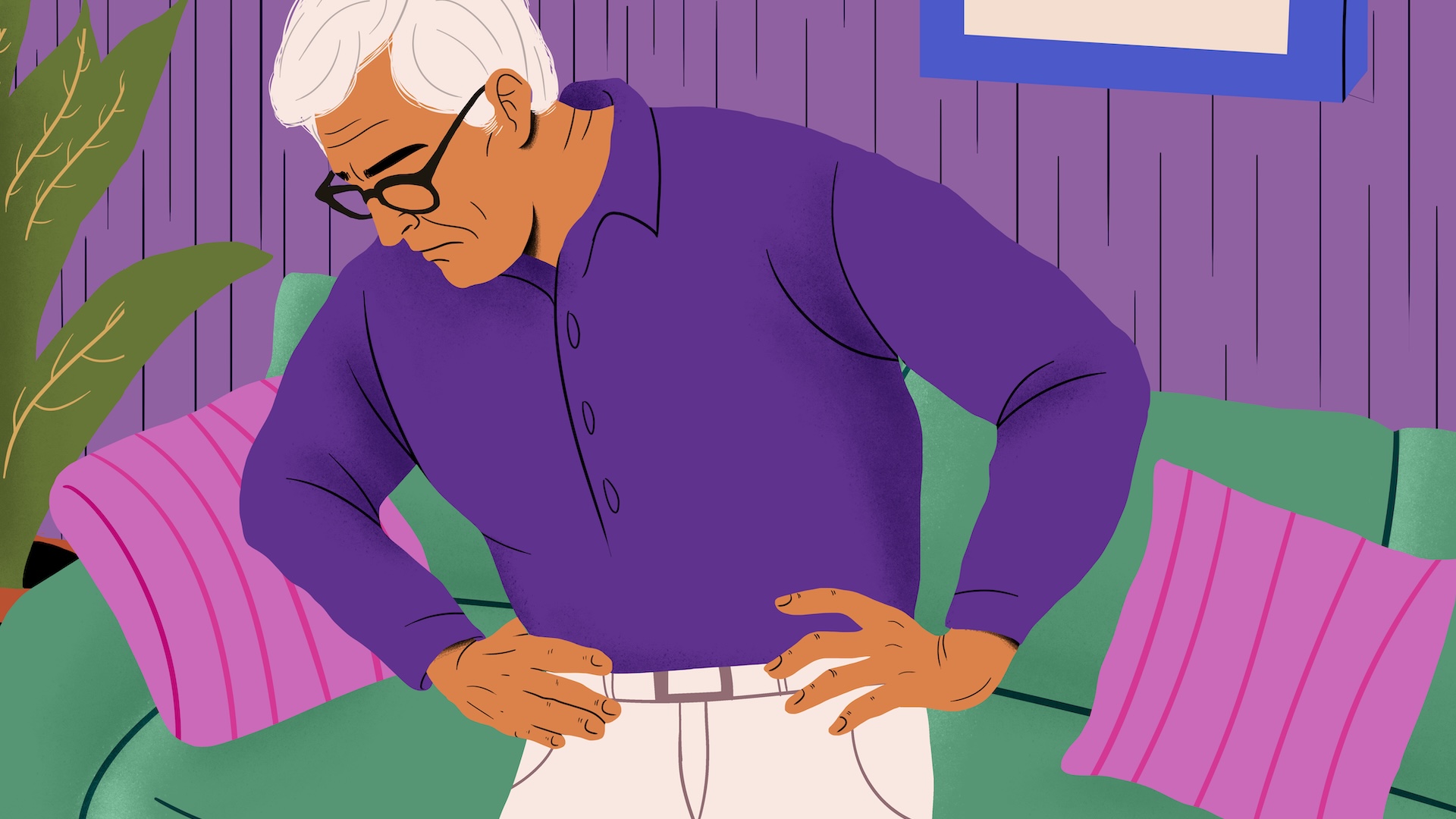Dissecting the Bloodthirsty Bliss of Death Metal

Brutality now becomes my appetite Violence is now a way of life The sledge my tool to torture As it pounds down on your forehead
Shakespeare it's not. Those lyrics, from "Hammer Smashed Face" by the band Cannibal Corpse, are typical of death metal — a subgenre of heavy metal music that features images of extreme violence and the sonic equivalent of, well, a sledgehammer to the forehead.
The appeal of this marginal musical form, which clearly seems bent on assaulting the senses and violating even the lowest standards of taste, is mystifying to non-fans — which is one reason music psychologist William Forde Thompson was drawn to it. Thompson and his colleagues have published three papers about death metal and its fans this year, and several more are in the works.
"It's the paradox of enjoying a negative emotion that I was interested in," says Thompson, a professor at Macquarie University in Sydney, Australia. "Why are people interested in music that seems to induce a negative emotion, when in everyday life we tend to avoid situations that will induce a negative emotion?" A number of studies have explored the emotional appeal of sad music, Thompson notes. But relatively little research has examined the emotional effects of listening to music that is downright violent.
Thompson's work has produced some intriguing insights. The biggest surprise? "The ubiquitous stereotype of death metal fans — fans of music that contains violent themes and explicitly violent lyrics — [is] that they are angry people with violent tendencies," Thompson says. "What we are finding is that they are not angry people. They're not enjoying anger when they listen to the music, but they are in fact experiencing a range of positive emotions."
Those positive emotions, as reported by death metal fans in an online survey that Thompson and his team conducted, include feelings of empowerment, joy, peace and transcendence. So far, almost all of the anger and tension Thompson has documented in his death metal studies has been expressed by non-fans after listening to samples of the music.
In a paper titled "Who enjoys listening to violent music and why?," published earlier this year in Psychology of Popular Media Culture, Thompson and colleagues sought to identify specific personality traits that distinguished death metal fans from non-fans. In the study, which involved 48 self-described death metal fans and 97 non-fans (all in their 20s), he deployed an arsenal of established psychological tools and measures. These included the Big Five Inventory (BFI) of personality — which assesses openness to experience, conscientiousness, agreeableness and neuroticism — as well as the Interpersonal Reactivity Index (IRI), a 28-item measure of empathy.
Get the world’s most fascinating discoveries delivered straight to your inbox.
Notably, on measures of conscientiousness and agreeableness, the scores of death metal fans were subtly but reliably lower than those of non-fans. One possible explanation for this finding, the authors write, "is that long-term, persistent exposure to violent media may lead to subtle changes in one's personality, desensitizing fans to violence and reinforcing negative social attitudes." But Thompson emphasizes that we just don't know. It is also possible that people with these personality traits are more likely to gravitate to death metal.
Results from the IRI showed the fan group and non-fan group with similar scores on the four dimensions of empathy that the index measures. When listening to death metal, however, study participants with lower empathy scores were more likely to experience higher levels of power and joy than those with greater empathic concern. That was true as well, Thompson found, for people whose personality assessment showed them to be more open to experience and less neurotic.
In the study, each participant listened to four out of eight 60-second samples of popular death metal songs (selected by the researchers from multiple online lists) and answered questions about the feelings the music evoked. The songs included "Slowly We Rot," by Obituary and "Waiting for the Screams," by Autopsy, as well as "Hammer Smashed Face."
In one set of responses, the subjects rated (on a scale of 1 to 7) the emotional effects of the music, using pre-selected terms such as "fear" and "wonder." In a second step, they described in their own words how death metal made them feel. "With its repetitive, fast-paced tempo, down-tuned instruments and blast beats, it is virtually impossible not to be excited!" one fan wrote. "It sounds like messed-up teenagers making throaty, irritating noises about how bad their lives are," wrote a non-fan. "It's annoying."
The fact that the study relies on self-reporting by the subjects is a red flag for Craig Anderson, a psychology professor at Iowa State University who has spent his career researching the links between media violence and aggression, and who was not involved in Thompson's study. Self-reporting "may or may not reflect reality," Anderson says. "People may be lying to you, or, more likely, people don't have direct access to many of the kinds of effects that media have on them. They can construct an idea or hypothesis, and self-reports are essentially that kind of data. People may report that 'Oh yeah, this makes me feel this way,' without recognizing whether that's really true."
The paper acknowledges the limitations of self-reporting. But the researchers add that "the convergence of evidence" from the personality assessments and other measures, along with the fans' enthusiastic embrace of death metal, "suggest that the dramatic differences in emotional and aesthetic responses between fans and non-fans are genuine.
Chris Pervelis, a founding member and guitarist of the band Internal Bleeding (whose songs include Gutted Human Sacrifice and em>The Pageantry of Savagery), is confident that the positive emotions he experiences when he plays and listens to Death Metal are the real thing. "When I'm locked into it, it's like there's electricity flowing through me," says the 50-year-old, who runs his own graphic design business. "I feel really alive, like hyper-alive. And the people I know in Death Metal are smart, creative and generally good-hearted souls."
In an essay published in August in Physics of Life Reviews, Thompson and his co-author Kirk Olsen considered the possible role of brain chemistry in the response to violence and aggression in music. The high amplitude, fast tempo and other discordant traits of death metal, they write, may elicit the release of neurochemicals such as epinephrine — which "may underpin feelings of positive energy and power reported by fans, and tension, fear and anger reported by non-fans."
As for the central riddle of death metal — how explicitly violent music might trigger positive emotions in some people — Thompson cites a 2017 paper on the enjoyment of negative emotions in art reception, published in Behavioral and Brain Sciences. The paper, from the Max Planck Institute for Empirical Aesthetics, suggests a mental process that combines "psychological distancing" and "psychological embracing." In other words, a lack of real-world consequences — it's just a song! — may provide the distance necessary for fans to appreciate the music as an art form and embrace it.
A large body of research, by Anderson and others, has established a clear link between aggression and multiple types of media violence including video games, film, television and music with violent images and themes. "But no one is saying that a normal, well-adjusted person — who has almost no other risk factors for violent behavior — is going to become a violent criminal offender simply because of their media habits," says Anderson, whose research includes a 2003 study of the effect of songs with violent lyrics. "That never happens with just one risk factor, and we know of dozens of common risk factors. Media violence happens to be one."
One finding from Thompson's research — that many death metal fans say they listen to the music as a catharsis, a way to release negative emotions and focus on something that they enjoy — is also familiar to Pervelis. "I call it the garbage can," he says of the music he's been involved with for decades, "because it's where I can dump all my bad, emotional baggage. I put it into writing riffs and letting it all out on stage, and it keeps me level and completely sane."
In his ongoing study of violent and aggressive music, which includes a June paper in the journal Music Perception about the intelligibility of death metal lyrics (forget about it, non-fans), Thompson has found that the limited appeal of the form may be one its key features for fans—one at least as old as rock itself. He cites a 2006 paper by the late Karen Bettez Halnon, who found that fans of heavy metal (as has certainly been the case with many other genres and sub-genres over the decades) view the music as an alternative to the "impersonal, conformist, superficial and numbing realities of commercialism."
In that vein, one possible function of the gruesome lyrics that are the hallmark of death metal, says Thompson, may be to "sharpen the boundary" between fans and everybody else. Pervelis, who compares the violent imagery to the "over-the-top, schlock horror films of the 70s," says feeling like an outsider and an insider at the same time is at the core of the death metal experience. "This music is so extreme and so on the fringe of the mainstream that people who listen to it and people who play in death metal bands belong to an elite club. It's like we've got a little secret, and I think that's what binds it all. It's a badge of honor."
This article was first published on Scientific American. © 2012 ScientificAmerican.com. All rights reserved. Follow Scientific American on Twitter @SciAm and @SciamBlogs. Visit ScientificAmerican.com for the latest in science, health and technology news.

